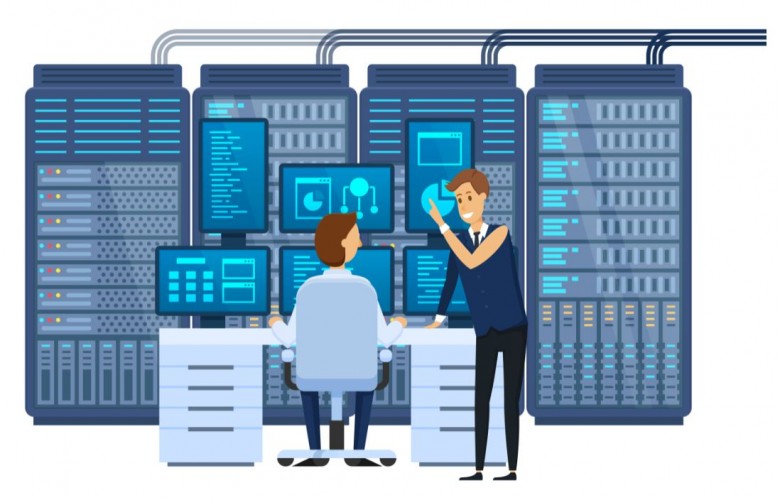The Third Most Important Characteristic of a Great IT Support Engineer
Survey Says: Great IT Problem-Solving Skills
In the last two posts, we talked about how the ability of the engineer to follow processes and communicate effectively is vitally important to service delivery. However, even then we still don’t have the makeup of a GREAT engineer. The final characteristic of a GREAT engineer is…… IT problem-solving skills.
Problem-solving is the art of critical and creative thinking, self-directed learning, teamwork, and communication. An engineer who has this skill set instinctively knows how to handle technical problems.
Catch-All Approach
Unfortunately, an engineer can’t be expected to excel at all levels. Yet, most MSPs use a catch-all approach in their Network Operations Center (NOC). In this scenario, they throw their engineers into a NOC where they take the ticket that is next in the queue. If the engineer does not know how to resolve the issue, they hand it off to someone else. Consequently, they also hand off the opportunity to learn how to fix it.
On the other hand, most of the engineers in the queue are overqualified to handle the ticket. Why? Because 80% of the tickets that come into the queue are entry-level. It’s a catch-all strategy that doesn’t benefit the client, the MSP, or the engineer.
Experienced Engineers Get Bored Under the Catch-All Approach
Unquestionably, engineers get bored easily, and if they are not challenged, they lose their momentum and become stagnant. Nevertheless, they can be on a fast track to learn something new all the time or on the slow track and take Tier-1 calls. The difference in salary and technical skills is drastic five years down the road and they know this.
Therefore, for the sake of all, no one should ask a Tier-3 engineer to spend the majority of their time on Tier-1 level issues, or vice versa. They are either wasting the engineer’s talents (and charging you too much for simple problems), or you are paying the cost for someone to work on advanced issues who do not have the experience or capability to handle it – thus, resulting in extreme downtime.
The Catch-All Cost The Client Money
Due to the way they are structured, most MSPs look to hire engineers with experience. Conversely, this doesn’t make sense considering that 80% of the tickets are entry-level tickets. Clearly, 80% are password changes, printer connection issues, display issues, updates, viruses, etc. that can be resolved within 15 minutes! In fact, most entry-level tickets can be script-based. Not surprisingly, enterprise companies have long taken advantage of helpdesk companies who are priced at Tier 1 & 2 rates.
In addition, experienced engineers are much more costly once you consider how competitive the market is with such a low unemployment rate. Likewise, it is much more difficult to scale if the MSP is hiring only experienced personnel that everyone is fighting over.
Knowing this, how much do you think the MSP has to charge to make a profit? The truth is, most MSPs charge $150 per hour or higher. Subsequently, that is the true math behind the unlimited, price per seat and price per device plans. (Reference IT Outsourcing Secrets Chapter 2: The Math Behind It All.)
Therefore, it only makes sense for both the client and the engineers to hire 80% of the engineering staff at entry-level and promote within. It scales better, it meets the engineer’s needs, and most importantly, it meets the client’s needs.
INSI’s Tiered-Based Approach is the Solution for Engineers and Clients
In contrast, INSI believes an engineer should be proficient at the tier level in which they were hired. What does this mean? A tier-1 engineer must be good at simple tasks, such as password changes, printer issues, etc. They resolve 60% of the end-user issues.
A tier-2 engineer must be proficient at troubleshooting more advanced desktop issues. They resolve 20% of the end-user issues.
The tier-3 team takes care of issues where multiple end-users are affected. Additional tasks include highly advanced issues, projects, or network architecture planning. Therefore, a tier-3 engineer who was hired for server work must be very skilled at that particular task.
Our approach allows for a much clearer career path. In addition, our engineers do not get bored nor are they under-qualified. Therefore, our senior engineers who only focus on senior-level issues will be much more proficient than an engineer who works in the catch-all environment and spends 80% of their time on entry-level issues. Also, our tier 1 & 2 engineers will not be assigned tickets that are way above their pay-grade. Both speed up the time to resolution for the client.
Call INSI if You Want Problem Solving Engineers Working in Your Environment
INSI’s unique Customized IT™ Program is a tiered based approach that is ideal for both the client and the engineer. Call us today to find out more about our programs.
Do You Want To Learn More About The Importance of Problem-Solving Skills?
If you would like to know more about this topic and how it affects you, visit Amazon or Barnes & Noble for a copy of the book IT Outsourcing Secrets – A Small Business Guide to Comparing IT Support Companies.





